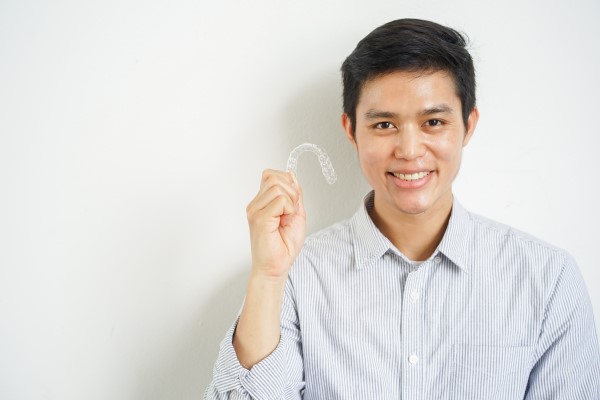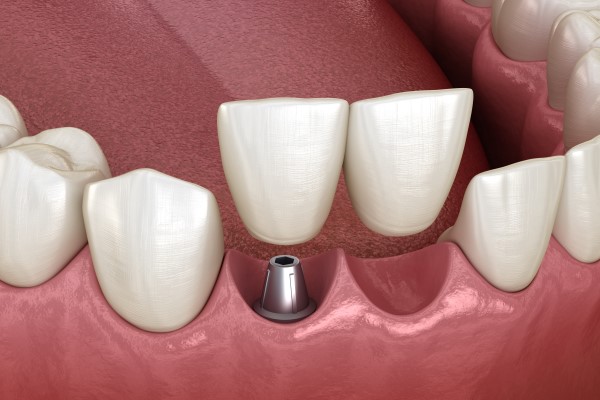Who Is an Ideal Candidate for Invisalign?

Some people may feel embarrassed to wear traditional braces, especially adults who may feel they appear unprofessional or unattractive, but Invisalign® can make the process more bearable by offering a less noticeable option. Rather than relying on unsightly metal wires and brackets to adjust the teeth, this treatment method uses 3D technology to create a set of clear plastic aligners that are custom-designed to fit over the patient’s teeth and gradually straighten them. The typical duration of treatment is approximately twelve months, but this varies depending on the severity of the misalignment and the diligence of the patient in wearing the aligners.
While there are many different situations that these aligners can be used for, not everyone can benefit from this alternative to traditional braces. Ideal candidates have specific characteristics that enable these aligners to be a valid solution.
Suitable cases for Invisalign
In general, invisible aligners can be used to address the following situations:
- Crossbite
- Underbite
- Overbite
- Open bite
- Protruding teeth
- Spaces/gaps
- Overcrowded teeth
- Crooked teeth
Issues with invisible aligners
Whether braces or aligners are acceptable to treat alignment issues is often up to the discretion of the dental professional in charge of the case. If any previous dental issues are present or the situation is especially complicated, X-rays or further examination can help a dentist determine if additional procedures are necessary or if there is a more suitable alternative to consider.
Oral structure
A big factor that determines whether a person can be treated using Invisalign® is the person’s overall mouth structure and health. Some people's teeth are shaped or positioned in such a way that the aligners cannot fit snugly enough to effectively grab and move each tooth.
Complex cases
Additionally, some cases are too complex for this discreet alternative and patients are more likely to achieve better results with regular braces. Serious bite problems, large gaps, rotated teeth, and misshapen teeth are examples of dental conditions that cannot be fixed with invisible aligners and require traditional braces or other procedures to correct.
Dental issues
Patients with existing cavities or gum disease may need to undergo restorative treatments before starting with Invisalign treatment. Those with dental bridges or implants may also have an issue with the aligners failing to fit correctly, so other alignment treatments may be a more appropriate and beneficial choice. Individuals with TMJ may also experience issues with the plastic aligners, although there are also reports that the liners may serve as a mouthguard to keep from clenching the jaw, which can be helpful for TMJ.
Stage of life
Childhood or adolescence is a common time for many to undergo traditional orthodontic treatments. It is socially acceptable these days for children and teenagers to have metal braces on their teeth. However, adults may feel self-conscious for personal or professional reasons if theyir smile displays a mouth full of metal. For this reason, invisible aligners are ideal, as they are barely noticeable and work to correct crooked teeth without distracting.
Responsibility and dedication
Invisalign® is only recommended for older teen or adult patients willing to follow the treatment guidelines. Clear aligners can be removed from the mouth and require the individual to be dedicated to following the treatment plan. Wearing the trays for less than 22 hours a day can prevent the patient from adequately progressing. Since children are often less mature and more forgetful, braces are more suitable as the metal devices are fixed onto the teeth.
Additionally, some adults who have a busy schedule or experience difficulties wearing the aligners for the prescribed amount of time may find more success trying other methods. However, many older patients prefer Invisalign® since it is a less obvious way to align the teeth and jaw. It is also easier to eat regular meals and clean the teeth since the trays can be removed at any time.
Conclusion
Starting a conversation with a dental professional about your situation is the simplest way to learn if you are a fit candidate for Invisalign®. Deciding between this solution and braces can be difficult for some people seeking teeth-straightening methods, but it is important to consider both personal preference and level of dedication when making a choice. If your alignment concerns are not too extreme and you know you can commit to wearing the corrective devices at least 22 hours a day, this treatment method may work for you. A dentist can check your background and take scans to provide more information on the severity of your case and explain if clear aligners are a possible solution.
Request an appointment here: https://sonorandesertdentistry.com or call Sonoran Desert Dentistry at (480) 439-0117 for an appointment in our Scottsdale office.
Check out what others are saying about our dental services on Yelp: Invisalign in Scottsdale, AZ.
Recent Posts
Like many young people, your teenager may have crooked teeth or bite problems that need correcting. Your dentist may recommend Invisalign® as a treatment option for your teen. Maybe you are familiar with traditional braces — perhaps you wore them yourself when you were younger. However, Invisalign can correct your teen's orthodontic issues while offering…
Improperly spaced teeth can cause an array of physical and mental health issues. Invisalign® clear aligners can help. Many people of all ages use Invisalign trays today to discreetly and efficiently correct their smiles. These transparent corrective treatments can be an especially great option for teenagers.Below are some reasons why teens might decide upon Invisalign…
If you and your child are interested in an alternative to traditional braces, Invisalign® may be just what you are looking for. It is just as effective at straightening teeth as traditional braces but has certain qualities that make it more tolerable for teenagers.It is usually preferable to wait to delay teeth straightening treatment until…
If your teen needs teeth straightening, Invisalign® Teen is one potential option you can choose. The treatment has both benefits and drawbacks when compared to traditional braces.Invisalign is a brand of clear aligners that can be used in place of traditional braces for straightening teeth. The Invisalign Teen treatment differs only slightly from the adult…


